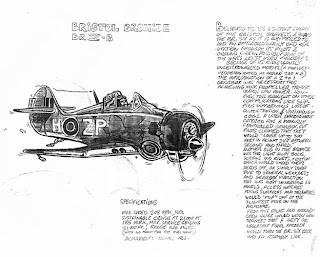
Believed to be a distant cousin of the Bristol Bravely and Bravo, The BR. Six, as it is referred to, had an extraordinarily bad reputation among its pilots and ground crew.
Possibly one of the war's least used aircraft, mainly because of its ridiculously underpowered engine. ( A Horsley Hedgehog, rated at 250 hp.)
The introduction of a 2 to 1 gearbox was necessary in order to achieve max
propeller thrust during low power settings. However this in turn brought about other complications, like slipping differentials, sudden loss of clutch tension and the random stripping of cogs.
A later improvement, catered for a manually controlled gearbox, but pilots claimed that they would "Loose up to 300 ft." in height every time they changed gears.
Another bug in the Bromide, was the light alloy bolts, screws and rivets. Most of which would shear in two or simply snap. This was due to both their general weakness and excessive gearbox vibration.
This was most unnerving, as panels, access hatches, flying surfaces and tail wheels would "pop" off at the slightest stress on the airframe.
Because of this drawback, pilots and ground crew alike, would warn new trainees, that a hasty or negligent final approach could turn the B.R.Six
back in to an assembly line.


No comments:
Post a Comment